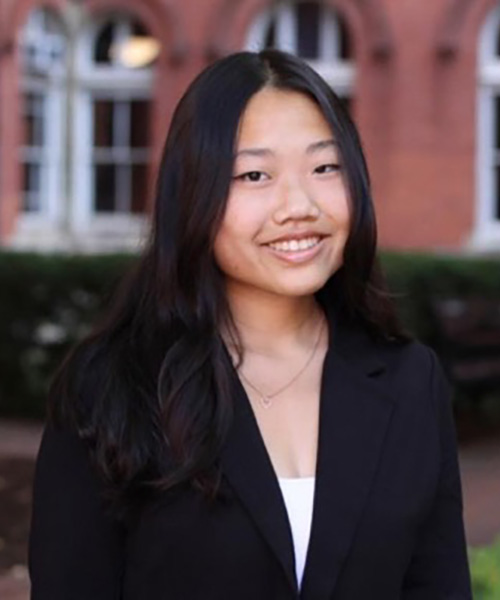
The People Beyond the Talking Points
Bennie Chang | 2025年5月31日
响应: Georgetown Students Reflect on Student Dialogue in Beijing and Hong Kong
Zifei Zhao
请注意:中英文网站上发表的教日志均为英文。
Arriving in Beijing for the U.S.-China Student Dialogue, I carried with me an unlikely diplomatic tool: a bag of Scandinavian Swimmers from Trader Joe’s, tucked among other snacks I hoped would spark conversation with my peers at Tsinghua University. Even at 11:00 p.m., a student intern was there to greet us, a small but meaningful gesture that set the tone for the trip. In that moment, I realized how much hospitality and human connection shape cross-cultural exchanges in ways policy debates never could.
Walking through Tsinghua’s sprawling campus the next day, I was struck by its grandeur. The tranquil Shui Mu Qing Hua pond stood in contrast to our beloved koi ponds back on the Hilltop. As a Chinese-American, I had grown up hearing about the gaokao and the near-mythic status of Tsinghua, a dream for millions. Knowing that every year, thousands of tourists stand outside Tsinghua’s gates, snapping photos in hopeful reverence, I felt the weight of my privilege in being there. The pandemic had made such access rare, and the chance to step inside this academic fortress left me humbled.
Beyond the campus, we visited the Great Wall and the Forbidden City, monuments to China’s imperial past and enduring global influence. Climbing the steep steps, we traded stories, compared music tastes, and laughed through the exhausting elevation. One memorable encounter was with a fellow Tsinghua student, who hailed from the same province as my family. Our conversation, a mix of Cantonese, Mandarin, and English, felt like a microcosm of the trip itself: fragmented yet cohesive, bridging gaps through sheer willingness to try.
The real test came during our joint project on U.S.-China business and trade relations, a topic fraught with tension. The Trump-era “Liberation Day” tariffs loomed large in our discussions, and as we debated policy shifts, the room grew heavy with disappointment. Progress felt impossible until someone reached for the Scandinavian Swimmers. The absurdity of debating geopolitics over gummies broke the tension. In that moment, the candy became more than a snack; it was a reminder that shared humanity often precedes policy solutions.
At Hong Kong University, during a fireside chat, we were asked to identify challenges and opportunities in U.S.-China relations. The challenges came easily, but opportunities were harder to name. Eventually, we landed on one: youth dialogue. This trip had proven that despite political strains, young people on both sides were finding ways to connect, whether through social media or face-to-face exchanges like ours. Our conversations were a tiny but tangible step toward mutual understanding.
Visiting institutions such as the National Development Reform Commission, American Chamber of Commerce, Goldman Sachs, and the South China Morning Post underscored the profound impact of the U.S.-China rift on global business and policy. Yet what stayed with me were not the macro-level analyses, but the small moments: shared snacks, multilingual laughter, and the quiet understanding that no government policy could ever fully erase the ties between people. The path forward is uncertain, but if diplomacy can begin with a bag of gummies, perhaps hope isn’t so naive after all.
Zifei Zhao (SFS/B’27) is a student at Georgetown University studying business and global affairs.

Bennie Chang | 2025年5月31日

Daniel Castro Bonilla | 2025年5月31日

Isabella Stratta | 2025年5月31日

Maggie Yang | 2025年5月31日

Patrick Coggin | 2025年5月31日

Raghav Akula | 2025年5月31日

Tiffany Cowan | 2025年5月31日

Drew Zacharias | 2025年5月31日

Luke Hughes | 2025年5月31日